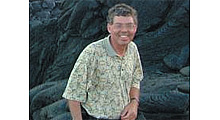FCC Establishes Wireless Mic Comment Deadline

Doug Lung
Spectrum for wireless microphones is expected to be scarce after the FCC completes its repacking of the UHF TV band. Unlicensed users of wireless microphones in the TV bands are likely to have even more problems finding frequencies for their systems due to the use of the guard bands between wireless spectrum and broadcast channels for white space devices.
In late October the FCC requested comments in the Wireless Microphones Proceeding. Last week it announced comment dates for the proceeding. Comments are due Nov. 21, 2012 and Dec. 12, 2012.
In the Proceeding, the FCC noted that the repacking “may reduce the spectrum available in the TV bands for secondary use by licensed and unlicensed wireless microphones as well as for unlicensed white space devices.”
The FCC is seeking comment on ways in which wireless microphones can use the limited spectrum available more efficiently. Current wireless mics occupy as much as 200 kHz of bandwidth, and after interference is considered, only six to eight microphones can occupy a 6 MHz TV channel.
The Proceeding notes that Shure has new digital wireless microphone systems that can accommodate 14 to 15 wireless microphones per channel, and Sennheiser's digital wireless microphone system can accommodate as many as 12 microphones per channel.
The FCC sought “comment on the state of development of digital technologies from these and other wireless microphone manufacturers, and further development that is anticipated over the next few years. The Commission asks that commenters present information on the production values, interference implications, and performance impact of these new microphones.”
The FCC is also asking for input on what bandwidth efficiencies may be achievable while still providing “adequate performance for the specific use.” It also wants input on interference implications, “particularly as they relate to intermodulation interference on packing more microphones into less bandwidth,” and asks “are there filters available to mitigate these effects?”
Further, input is requested on the way “fidelity and latency” of new mics compare to existing models, and if they’re “adequate for professional musical and theatrical performances.”
Unlicensed wireless microphone users are able to register their use and protect their channels from white space devices for major events, but in the recently released Proceeding the FCC appears hesitant to expand eligibility, as this could reduce spectrum available for white space devices. If wireless microphone use is licensed at some venues, the FCC asks if a license should be issued to venue or to a contractor supplying audio services to the venue, rather than to individual users of the microphones.
It seems very unlikely the FCC will find spectrum for wireless microphones to replace that which is expected to be lost in the repacking, and it also appears that current analog wireless microphones with 200 kHz bandwidth will not be allowed--or at a minimum not protected--within a few years.
Wireless microphone users may want to review the Proceeding and file comments on the various alternatives under consideration before the Nov. 21 deadline.
The professional video industry's #1 source for news, trends and product and tech information. Sign up below.

Doug Lung is one of America's foremost authorities on broadcast RF technology. As vice president of Broadcast Technology for NBCUniversal Local, H. Douglas Lung leads NBC and Telemundo-owned stations’ RF and transmission affairs, including microwave, radars, satellite uplinks, and FCC technical filings. Beginning his career in 1976 at KSCI in Los Angeles, Lung has nearly 50 years of experience in broadcast television engineering. Beginning in 1985, he led the engineering department for what was to become the Telemundo network and station group, assisting in the design, construction and installation of the company’s broadcast and cable facilities. Other projects include work on the launch of Hawaii’s first UHF TV station, the rollout and testing of the ATSC mobile-handheld standard, and software development related to the incentive auction TV spectrum repack. A longtime columnist for TV Technology, Doug is also a regular contributor to IEEE Broadcast Technology. He is the recipient of the 2023 NAB Television Engineering Award. He also received a Tech Leadership Award from TV Tech publisher Future plc in 2021 and is a member of the IEEE Broadcast Technology Society and the Society of Broadcast Engineers.
